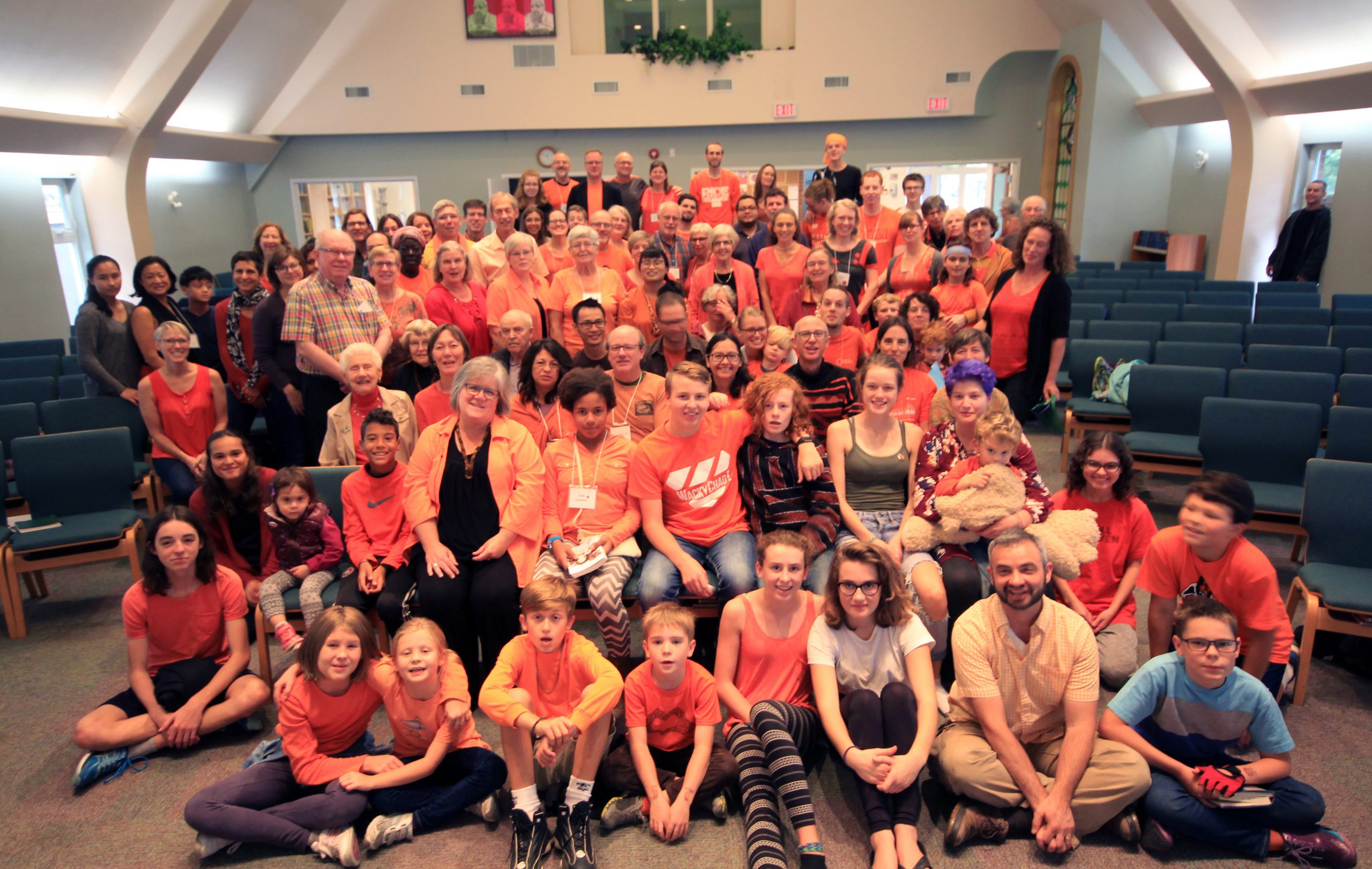The land where Toronto United Mennonite Church meets has a history. Since time immemorial, Indigenous nations have known and loved the north shore of Niigaani Gitchigami (Lake Ontario). The land has held the stories and hopes of groups including the Haudenosaunee, Wyandot, and Michi Saugig (Anishinabeg).
In recent centuries, the perpetrators of colonial violence sought to erase those stories and disregard the treaty relationships established over generations. As a Christian church composed of people of many nations, ancestries and stories, we acknowledge that we have benefitted from the breaking of promises and the theft of land.
We are learning the history of these lands and committing to being part of a future where Indigenous Sovereignty is honoured. We seek guidance through the principles of the United Nations Declaration on the Rights of Indigenous Peoples, and we seek to be good neighbours along with all those who love this land.
Glossary and Pronunciation
Anishinabeg – AH-nish-nah-beg (or -bek) – a large number of Indigenous groups are part of the Anishinabe Nation. Some groups of this nation (and other terms used for those groups) include: Ojibwe (Saulteaux, Chippewa), Odawa (Ottawa), Potawatomi, and Algonquin.
Haudenosaunee – Ho-doh-noh-show-nee (or sho-n) – a confederation of Indigenous groups also called the Six Nations Confederacy, and called the Iroquois Confederacy by some Settler groups. Formed of five independent nations; Seneca, Mohawk, Oneida, Onondaga, and Cayuga, they admitted the Tuscarora, becoming the Six Nations, in 1722.
Indigenous – In-did-juh-nus – an internationally recognised term for groups who are the first or earliest known inhabitants of an area, usually holding a culture related and specific to that land, and distinct from later arrivals including Settlers and Newcomers.
Within Canada, there are three groups recognised as Indigenous – First Nations, Metis, and Inuit, and each of those groups have many constituent elements. Note, however, that not all Indigenous individuals are part of an Indigenous political group (for example, a First Nation).
Related terms still in use include First Peoples, Aboriginal, and Native. Be sure to capitalize this term when referring to an individual, nation or group who is Indigenous (if in doubt, capitalize).
Newcomer – a term used to describe communities and individuals in Canada who are not Indigenous, but who have arrived in recent generations. This blanket term encompasses groups as broad as economic migrants, refugees, formerly enslaved people, and their descendants. It is used in part to recognise that not all non-Indigenous people in Canada benefit from the same privileges and relationships are more complex than simply Indigenous and Settler. Newcomers are considered to be ‘Settlers’ in that they are party to the treaties on the Canadian/Settler side.
Niigani Gitchigami – Nee-gah-nee Git-chi-gah-mee – The name, in Anishinabemowin, of the body of water that the Government calls Lake Ontario.
Mennonite – Men-no-nye-t – an international community, part of the Anabaptist movement, Mennonites are Christians who emphasise the teachings of Jesus, including non-violence, and practice baptism and church membership as a mature decision. Mennonites derive their name from Menno Simons, an early leader in modern-day Netherlands, while today there are Mennonite communities and individuals around the world.
Michi Saugig (Mississauga) – the ‘people who live at the mouth of a large river’ – an Ojibwe (Anishinabe) community who took care of the north shore of Niigani Gitchigami. Despite negotiating treaties, Settlers continued to harass members and make their customary way of life difficult. Eventually the Michi Saugig were offered land for a Reserve by the Haudenosaunee (Six Nations of the Grand River First Nation), and they created the Mississaugas of the Credit First Nation (Formerly ‘of the New Credit’)
Settler – A term used for Non-Indigenous people and communities who settled in Canada, and their descendants, through colonization or conquest, and as a result of treaties signed between Indigenous and European nations. Settlers are considered to be ‘treaty people’ because they are parties to the treaties. However, since treaties do not cover all of the land that Canada claims, and the Canadian government has a history of disregarding treaty rights, Settler Canadians must learn about the treaties signed in their name and work to establish the right relationship.
Wyandot – Wye-an-dot – also Wendat, an Indigenous nation sometimes called Huron, a confederacy of tribes that were severely affected by disease and warfare. Today their communities are located in the US and in Quebec. Related Indigenous groups include the Attawandaron (Neutral) and the Petun (Tobacco).
United Nations Declaration on the Rights of Indigenous Peoples – an important document setting out the minimum standards that states must follow to ensure the survival and success of Indigenous nations. It was created over many years of consultation with Indigenous people around the world and is unusual in that it defines rights of ‘peoples’ rather than ‘people’ – meaning rights that are collectively held by groups. Although designed to inform the policies of states, the UN Declaration (UNDRIP) contains important principles for any group to consider.

